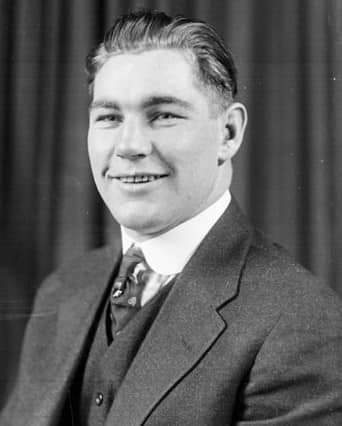
Hello Boxing enthusiasts, in this week's column I am going to talk about Les Darcy "The Maitland Wonder" [46(29KO)-4]. His name was James Leslie Darcy. He was born on October 28, 1895, at Stradbroke, near Woodville, New South Wales, Australia. He was a professional boxer who excelled as a middleweight, but held the Australian Heavyweight Championship title at the same time. He was Australian Middleweight Champion from May 22, 1915 to September 30, 1916 and Australian Heavyweight Champion from February 19, 1916 to September 9 of the same year.
He started boxing as an amateur at age 15 and quickly turned professional. He won his first 17 fights before challenging veteran Bob Whitel for the Australian welterweight title. The contest took place on November 3, 1913, it was 20 rounds and Darcy lost by PTS, but they met again in a rematch, on March 21, 1914, this time Darcy won in the fifth chapter by way of KO . Darcy moved from regional bouts to fighting at Sydney Stadium in Rushcutters Bay, and promoters began importing talent to challenge him.
He lost his first two fights in Sydney, one by DQ and one by PTS, to American Fritz Holland. The following year, Darcy faced another American, Jeff Smith, on January 23, 1915, in what was considered a contest for the Australian middleweight title. When Darcy complained of a low blow at the end of round five, the referee believed that Darcy did not want to continue and awarded the decision to Smith by DQ. Then there was a rematch on May 22, 1915, Darcy won the second round by DQ, Darcy was victorious when Smith hit him in the groin.
Darcy defeated boxers like: Eddie McGoorty, Billy Murray, Jimmy Clabby, George Chip, George Brown, Billy Hannan, Jack Clarke, Gus Christie, Fred Dyer, Henri Demlen, Les O'Donnell, Buck Crousey and David Smith, among others. He knocked out Smith and Holland in rematches. It is said that Darcy's opponents admired his courage, stamina, and striking power. On February 19, 1916, Darcy faced Harold Hardwick, Darcy won in the seventh round by TKO and thus won the Australian heavyweight title. Shortly thereafter he became involved in conscription politics during World War I and left Australia for the US to avoid aggravation.
He died on May 24, 1917, in Memphis, Tennessee, USA from septicemia and medical complications. It was speculated that the infection was due to dental work he received to replace teeth that had been knocked out during combat. After his death, Darcy's embalmed body was returned to Australia, where approximately half a million people paid their respects to him. His brother Frank, also a boxer, displayed many of the attributes of his brother, including courage. He died on May 9, 1919, from the flu and was buried in East Maitland Catholic Cemetery.
Darcy was inducted into the International Boxing Hall of Fame in 1993, the World Boxing Hall of Fame in October 1998, and the Australian National Boxing Hall of Fame in 2003. It is also notable that he was the first to be elevated to legendary status in 2009. In 2001, Raffaele Marcellino's opera “The Flight of Les Darcy”, with a libretto by Robert Jarman, premiered at the "10 Days on the Island" festival in Hobart, Tasmania. , Australia. Darcy's character does not have a singing role, but is played by a dancer and is based on the story that he played the violin to prepare for fights.